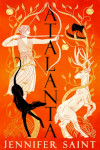Véronique Olmi – Beside The Sea
Posted 23rd March 2011
Category: Reviews Genres: 2000s, Angst, Domestic, Psychological, Translation
3 Comments

When obsession takes over everything else.
Publisher: Peirene Press
Pages: 103
Type: Fiction
Age: Adult
ISBN: 978-0-9562840-2-0
First Published: 2001 in French; 2010 in English
Date Reviewed: 9th March 2011
Rating: 5/5
Original language: French
Original title: Bord de Mer (By The Sea)
Translated by: Adriana Hunter
A mother takes her children out of school to go on a trip to the seaside. She wants to take them and herself away from everything and thinks that they should see the sea. They spend the time in a grotty hotel and have little money to spend. It will be the last journey they take.
All that I’d heard about this book could never have prepared me for what I was going to experience. Beside The Sea deals with depression, obsession, and mental illness, although the only one of these issues actually confronted by the mother in words is depression, and then only swiftly. A big part of the problem is that the mother is having a hard time accepting that she has a problem, rather than everything that affects her being caused by society and the world in general. Practically every sentence uttered is to do with a certain issue.
The way the book is written aptly projects the mother’s mindset. Short sentences, the sudden inclusion of swear words and other harsh statements indicate she’s become extremely irrational, as does the way she recounts the conversations of others. This means that the book is, to use a metaphor, one punch after another, repeatedly, beginning in a way that you feel you can understand her reasoning and ending in a way so incomprehensible to anyone but the mother.
It’s been the same sailor for thirty years, what I mean is the way I see him’s still the same, he’s still got his torn clothes and holes in his boots because it’s the bit about “boots all worn” that really matters, it’s terrible having sore feet, and shoes are the ruination of many a mother.
Olmi also shows us how troubled the woman has become by allowing us to see how others have responded. We are told about visits from the social worker and about things that other people have commented on, all described from the mother’s point of view. This means that the reader can understand what other people have done to try and help, and we see the reasons why the woman is against it. Unfortunately it also means that the reader is the one in the middle, wishing the social workers had made more inquiries in order to know what they, the reader, do.
The sad thing is that although the woman is staunchly against her children mixing in the world and she’s afraid of it for herself, you can tell that a part of her is desperate to be included and that perhaps if she was accepted by people, no matter how many (for it seems she has no friends) she might be alright. But then she is her own worse enemy in that respect, making a point of only leaving her home when others aren’t around outside.
One of the biggest issues is a spin-off of the woman’s personal problems – neglect. Because the woman thinks mostly of herself, even when she believes she is thinking of her children, we see, through what she says, that the children, especially the eldest, are not coping. The youngest is still at an age where he doesn’t understand but Stan is nine and has ultimately become the adult in the family. The mother sees what Stan does as being against her, and at times she’s right, but when he is against her it is because he is becoming both frustrated and depressed himself. Stan’s actions, such as the episode at the seashore where the mother describes how he runs into make-believe walls, show the boy’s torment. Stan clearly understands what has happened to his mother and understands that he has to look after both her and his younger brother, but at the same time he sees that the world isn’t as bad as his mother makes out. The wall incident provides the metaphor for the times when he is trying to get through to his mother and fails, and the later dream his mother has of his walking into the sea but not drowning shows her misunderstanding of the other situation. Stan walks into the sea. The sea represents the world, but unlike what the mother is expecting, the sea doesn’t swallow him up, rather he walks through it boldly. Although we are shown that Stan is bullied we are also shown his strength and when he hits his mother all the hurt and burdens he carries with him are presented.
The above is summed up by the following statement:
…he looked so alone… how could he cope so well without me?
Unfortunately because of the difference in age and understanding of the two boys, Kevin and Stan are not always happy together, but the reader can see where Stan is trying to pull Kevin to “safety” as his mother holds onto the child’s unconditional love.
…it’s like he’s laughing to hear himself laugh, that he’s making the most of that laughter, having fun with it, and I know that a laugh like that runs away the minute you grow up.
To refer back to Stan’s strength I would like to comment that the metaphors and usage of imagery to demonstrate the other character’s emotions is absolutely fantastic. It’s rare to find a book so powerful in so many respects.
Why did the mother tell this tale? We are not given an explanation – was it just because she was thinking of it as one might as they write a diary, are we seeing it as it plays out, or is she giving a statement to the authorities? The last is a possibility purely because of what occurs – the book ends without the reader knowing what happens afterwards. But it gives you a glimpse as to how a mind can be thus affected, even if we do not know how long she has been like this or if there was a specific event or thought that triggered it.
The book has a truly haunting quality in that the issues at hand are never resolved and because they are supplied in such detail they are more difficult to accept than the unresolved issues in many other books.
The writing, and dare I say this English translation, for we must give Adriana Hunter her good due, is exquisite, the structure is superb, and what is at once a simple book and a complex one is just incredible.
Beside The Sea is a difficult read but is of great importance for the frank reality it shows of the workings of a mind in such turmoil.
Beside The Sea was originally written in French, and, as previously said, was translated into English by Adriana Hunter.
Related Books
None yet
March 26, 2011, 11:33 am
This was one of my favourite reads of last year, so I’m so pleased to see that you loved it. I agree – so sad, but so important.
Charlie: Unless another few books come along that give me more to think about it’s likely to be one of my favourites for this year. There is a lot to be learned from it.
March 26, 2011, 3:21 pm
I have a lot of trouble reading narratives like this one in which the prose is not straightforward story-telling. But that’s my lack. I have trouble with poetry sometimes, too. I can’t decide whether or not I would be able to understand and appreciate this novel or not.
Charlie: I was like that for so long, in fact it’s only since I started blogging and thus have been exposed to different genres that I’ve started reading it. If you look at this book as more of a statement (I’d say the idea of it being a sort of witness statement is definitely possible) you might find it easier to read. Defining all the types of writing it could be helped me to appreciate it.
3 Comments
Comments closed























March 24, 2011, 10:38 am
Wow. I need to read this! I already won a copy, thanks to a very generous fellow blogger, so it’s only a matter of finding time for it.
Charlie: I’m quite a slow reader and it only took me a couple of hours so if you’ve a few periods of free time that should be enough. That said I took a lot of time writing notes throughout my reading… Hope you enjoy it!